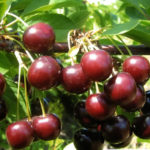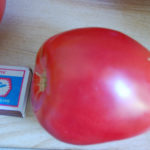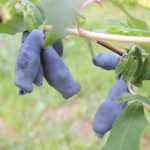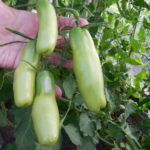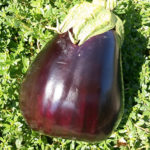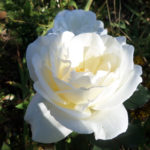Pear variety Fabulous
Fabulous - a pear of the selection of the South Ural Research Institute of Horticulture and Potato Growing with fruits of the summer ripening period. Obtained through crossing of 2 varieties - Tenderness x drooping. The authorship is assigned to E.A. Falkenberg, M.A. Mazunin and V.I. Putyatin. In 1993, the variety was accepted for State testing. Zoned and distributed in a number of areas of the Ural region. Also recommended for testing in the Volgo-Vyatka and Central regions. This variety is most often propagated on seedlings of the Ussuri pear.
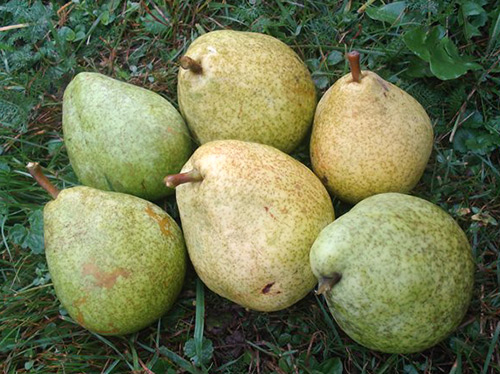
Trees are tall and are characterized by fast growth rates, the crown is quite dense, compact, narrow-pyramidal, slightly spreading. The branches have a straight shape, they are compact on the tree, when they leave the trunk, they form a right angle, the ends are directed upwards. The bark on the trunk and main skeletal branches is brown in color, with peeling. Flowering takes place at a later date (end of May).
Shoots of medium length, straight in shape, glabrous (no pubescence), dark red. Lentils are large in size, often found. The kidneys are small in size, bent, with a smooth surface, round in shape. Leaves are small in size, oblong, short-pointed, dark green in color; the edges of the leaves are even, with coarse serration. The leaf blade is flat, without pubescence, with a smooth, shiny surface. Petioles are thick, long, not pubescent. Stipules are small, elongated.
Fruits of pears Fantastic above average size (average weight 180-200 g, maximum does not exceed 250 g), one-dimensional, regular pear-shaped. The skin is dry, dull, with a smooth surface, when removed - green color, at the time of ripening - yellow-green; the integumentary color is expressed through a weak blush or is completely absent. The subcutaneous points are numerous, clearly expressed, large in size, gray in color. The peduncles are thick, long, curved in shape. The funnel is small in size, narrow in shape, with a slight rustiness. Non-falling cup, closed type. The saucer is medium in size, wide, with smooth sides. The heart is medium-sized, bulbous. The calyx tube is rather long and wide. Seed chambers are closed. Seeds are large, wide, pitcher-shaped, colored brown.

The pulp is white, fine-grained, medium density, tender, semi-oily, very juicy, slightly aromatic, good sweet taste with a spicy aftertaste. A variety of universal use. The fruits are consumed mainly fresh, and are also often used for the preparation of juices and other drinks.
Fruit ripening occurs towards the end of the summer period (second half of August), 10 - 12 days later Severyanka... Ripe fruits are not prone to shedding and continue to be firmly held on the branches. The fresh storage period of pears does not exceed 10 days, after which the pulp begins to turn brown.
The variety is self-fertile. The best pollinators can be varieties: Krasulia, Rainbow, Severyanka.
The early maturity of the Fairytale is quite high, the trees often enter the fruiting season 4 - 5 years after planting. At the same time, it was noted that in the first 2 years of fruiting, the yields are insignificant, after which the level of yield increases markedly. Trees bear fruit annually, without periodicity. In general, the yield of the variety is average.
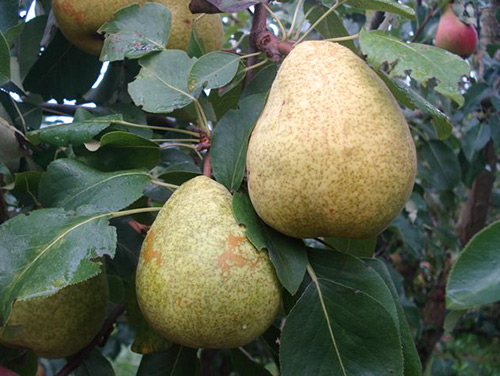
In the conditions of the Chelyabinsk region, the winter hardiness of this pear is quite high. After the harsh winter period of 1978 - 1979, when the air temperature dropped to minus 48.3 ° C, freezing of the mother tree was only 2 points.In addition, the variety is clearly endowed with a high regenerative capacity. Drought resistance is also high. The variety is highly resistant to scab and pear gall mites. It is unpretentious in leaving.
The main advantages of the Fazochnaya pear include beautiful fruits with a good dessert taste and high commercial qualities, high winter hardiness and drought resistance, immunity to major diseases and pests, and non-shedding of fruits.
No significant shortcomings have yet been identified. True, there may be difficulties in harvesting due to the tallness of the trees. Also, during transportation, the fruits may receive minor damage.
